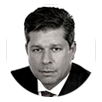The $1 trillion plus exchange-traded fund (ETF) industry
1 has been one of the fastest-growing segments of the asset management business, fundamentally changing the way institutional and individual investors alike access new asset classes and build diversified portfolios. Yet today, the vast majority of the industry’s assets are in passive
ETFs—funds that seek to track an underlying index. Will
actively managed ETFs power the next leg of industry growth, or will active management remain the domain of such traditional investment structures as mutual funds and hedge funds? While most media stories depict a slow start and uncertain future, I see just the opposite. How can I be so sure?
It partly comes down to definitions. In ETF Land, the Securities and Exchange Commission (SEC) has determined an ETF is considered passive if it tracks an index. So, the logic follows, an ETF that does not track an underlying index must be active. Consider
WisdomTree’s Currency ETFs—these funds seek to deliver the movement of foreign currency and its income rates available to U.S. investors. While this may not be what the media and industry pundits were envisioning when they talked about active ETFs, the fact of the matter is there’s no index for the
spot price of the Chinese yuan or the Brazilian real, and these actively managed ETFs have found a home in many investors’ portfolios. Bending the names and classifications further, consider the wave of alternative strategy indexes that seek to outperform traditional,
market capitalization-weighted indexes such as the
S&P 500. Isn’t that what active managers have been striving to do for decades? In my opinion, a performance-oriented strategy representing something other than capitalization-weighted market exposure is active in philosophy, if not SEC designation. By that measure,
WisdomTree and several others aim to provide an active experience for investors in our rules-based equity ETFs. Consider the case of PIMCO, the world’s largest bond investor. On March 1, 2012, they launched an ETF version of their well-known Total Return Fund run by well-known bond investor Bill Gross. The move was widely cited as a litmus test for the feasibility and investor appetite for traditional active management in the ETF wrapper. Only four months later, this active ETF has gathered roughly $1.8 billion in assets under management.
Whether utilizing the active ETF designation to achieve unique exposures outside the world of indexing, using smart indexes to try to do something fundamentally active such as striving to beat the market, or doing good old-fashioned stock and bond picking in the investor-friendly ETF wrapper, active ETFs are here already, and we believe they’re not going away.
Find out more about the WisdomTree approach.
1Source: Investment Company Institute, June 2012.
Important Risks Related to this Article
You cannot invest directly in an index.
Although the WisdomTree Currency ETFs invest in very short-term investment grade instruments, the funds are not "money market" funds and it is not the objective of the funds to maintain a constant share price.
Unlike typical exchange-traded funds, there are no indexes that the Funds attempt to track or replicate. Thus, the ability of the Funds to achieve its objectives will depends on the effectiveness of the portfolio manager.




